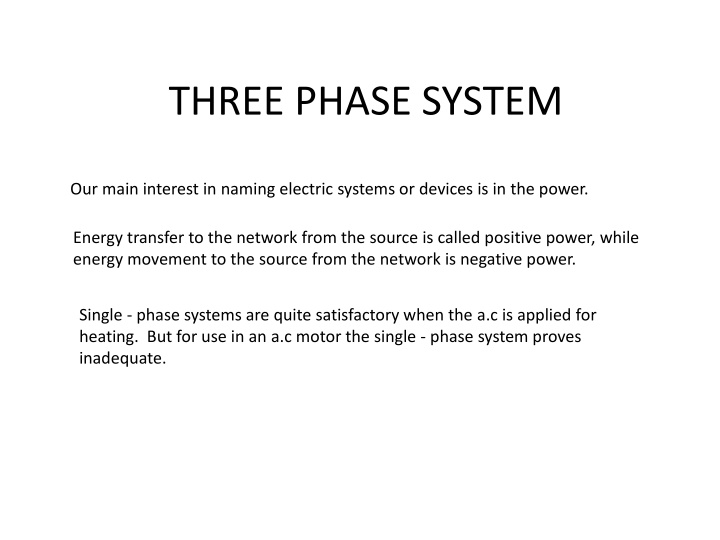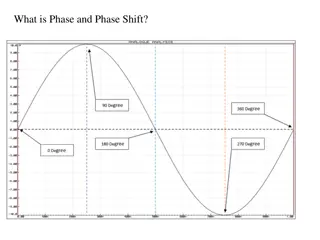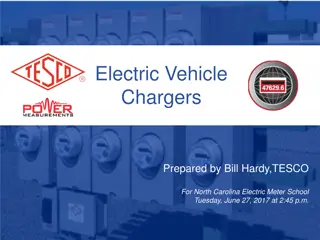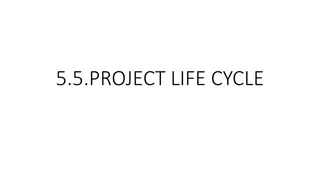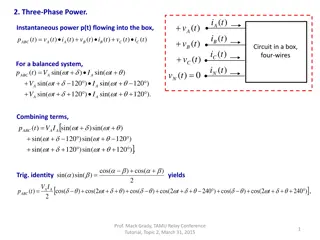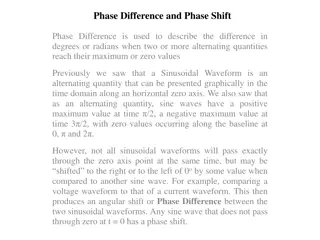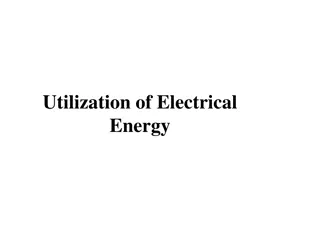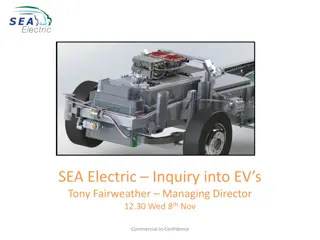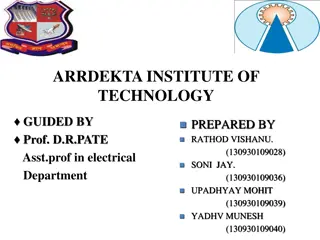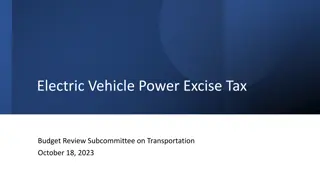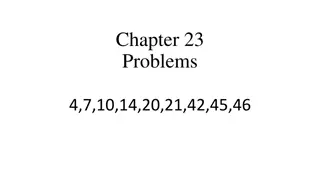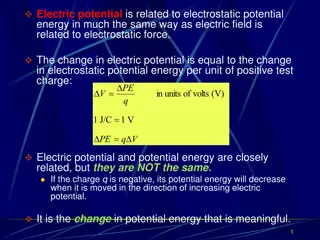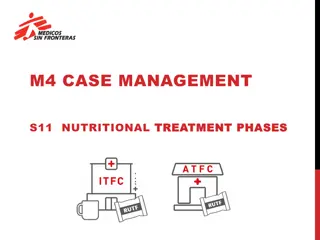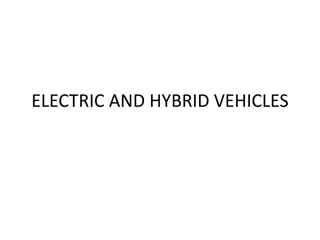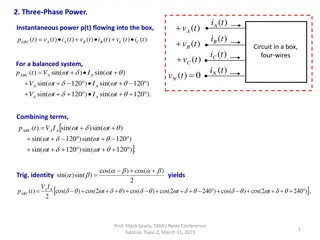Three-Phase Systems in Electric Power
In electric systems, energy transfer is crucial for applications like motors. Learn about line and phase voltages, power calculations, and examples in balanced 3-phase loads. Explore how to determine line and phase currents, as well as the total power in different system configurations.
Download Presentation

Please find below an Image/Link to download the presentation.
The content on the website is provided AS IS for your information and personal use only. It may not be sold, licensed, or shared on other websites without obtaining consent from the author.If you encounter any issues during the download, it is possible that the publisher has removed the file from their server.
You are allowed to download the files provided on this website for personal or commercial use, subject to the condition that they are used lawfully. All files are the property of their respective owners.
The content on the website is provided AS IS for your information and personal use only. It may not be sold, licensed, or shared on other websites without obtaining consent from the author.
E N D
Presentation Transcript
THREE PHASE SYSTEM Our main interest in naming electric systems or devices is in the power. Energy transfer to the network from the source is called positive power, while energy movement to the source from the network is negative power. Single - phase systems are quite satisfactory when the a.c is applied for heating. But for use in an a.c motor the single - phase system proves inadequate.
Using the subscripts L and P for line and phase quantities respectively, we can summarize as follows: VL= 3Vp IL = IP Delta connected system with a balanced load Fig 5.3 Delta connected system with balanced load From fig. 5.3,the voltage on the line and phase are equal. i.e VL = Vp and IL = 3Ip
Example 5.1 A line voltage source of 400V and non-inductive loads of 10kW, 8kW and 5kW, all in a 3- phase 4-wire network, are linked to the respective conductors and neutral as depicted in fig. 5.5. Determine (a) the individual line currents, and (b) the neutral conductor current. Solution b.
Soluton IR = I1 I3
Power with balanced 3-phase load Let IP = rms value of the current in individual phases and Vp = rms value of the p.d. across each phase Power per phase = IpVp x power factor. And Total power= 3IpVp x power factor Using the symbols VL and IL for the rms line voltage and current respectively, then for a star-connected system; Vp =? ?? ?/ 3 Substituting for Vp and Ip in equation , we have, PTotal= 3 VL IL x pf watts For a -connected system Vp = VLand Ip = ? ?? ? / 3 And substituting in equation , PTotal= 3 VL IL x pf watts So in a balanced 3- load the total power is always PTotal= 3 VL IL x pf watts irrespective of the types of connection. and Ip = IL
Example A three phase motor operating on a 400V system is developing 20kw at an efficiency of 0.87 with pf of 0.82. Calculate: (a) the line current and (b) the phase current if the windings are -connected.
Example 6.5 Express the following current phasors as instantaneous currents, all at a frequency : (a) 10 <0 (b) 25 < -30 (c) 6 < -90 Solution (a) i = 2 (10) Sin t = 14.4 Sin t. (b) i = 2 (25) Sin( t 30o) = 35.35 Sin ( t 30o) (c) i = 2 (6) Sin ( t 90o) = 8.484 Sin ( t 90o) Exercises 1) Phase voltage of a star-connected alternator are ER = 231 < 0V; and EY = 231< -120V; and EB = 231 <+120V. Determine the phase sequence. Evaluate ERY and EYB (Answer ERY = EYB = 400V) 2) A 400V, three phase voltage is supplied to a balanced three phase delta connected load of phase impedance (15 + j20) . Determine : i) The phase current in each line ii) power consumption Per phase ? iii) The vector sum of the three line currents ? (Answer IL = 27.7A, P = 3,840W, Phasor sum = 0)
